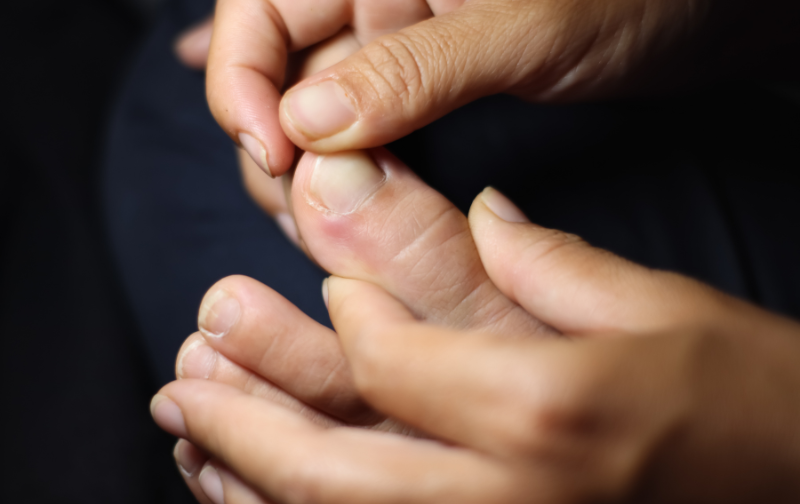Nail surgery
Nail surgery is a targeted procedure designed to address a variety of nail-related issues, including ingrown toenails, fungal infections, and deformed nails. Performed under local anaesthetic, this minor surgical intervention involves the removal of part or all of the nail plate to alleviate pain and prevent future problems. The procedure often includes the application of a chemical called phenol to destroy the nail matrix and reduce the likelihood of recurrence.

What to expect during nail surgery?
On the day of your nail surgery, we will begin with a thorough discussion about the procedure and have you sign a consent form. Your toe will be cleansed and a local anaesthetic will be administered to ensure the procedure is pain-free. A rubber band, or tourniquet, will be applied around the base of your toe to minimise blood flow during the surgery. Depending on your specific condition, either part or the entire nail will be removed. If needed, phenol will be applied to prevent the nail from regrowing. After the procedure, the tourniquet will be removed, and your toe will be dressed. We will schedule a follow-up appointment to monitor your recovery and make any necessary adjustments.
Preparation and consent
The procedure begins with a discussion about the surgery and signing of a consent form. Your toe will be cleansed to ensure a sterile environment
Local anaesthetic
A local anaesthetic will be injected into your toe, numbing the area to make the procedure painless
Tourniquet application
A rubber band or tourniquet is placed around the base of your toe to minimise bleeding during the surgery
Nail removal
Depending on your condition, either part or the entire nail will be removed. If indicated, phenol will be applied to prevent regrowth
Dressing and recovery
After the procedure, the tourniquet will be removed, and your toe will be dressed with a protective gauze. You will receive post-operative care instructions to follow at home
Follow up appointment
A follow-up appointment will be scheduled to monitor your recovery, change the dressing, and ensure proper healing
FAQs
What conditions can nail surgery treat?
Nail surgery is commonly used for ingrown toenails, fungal nail infections, thickened nails, traumatic nail injuries, and painful or deformed nails.
Is the procedure painful?
No, the procedure is performed under local anaesthetic, so you should not feel pain during the surgery. You might experience some discomfort from the anaesthetic injection and post-surgery tenderness as you recover.
How long does the surgery take?
The entire procedure typically takes an hour, including preparation, surgery, and dressing.
What is phenol, and why is it used?
Phenol is a chemical applied to the nail matrix to prevent the nail from regrowing. It helps reduce the chance of the problem recurring. In some cases, Phenol is not required.
What should I do after the surgery?
Rest with your foot elevated as much as possible. Follow the post-operative care instructions provided, and attend your scheduled follow-up appointment for monitoring and re-dressing.
Are there any alternatives to nail surgery?
Not in all cases. Alternatives may include routine nail reduction, conservative treatments to prevent ingrown nails, nail reconstruction, and fungal nail treatments. Consult with your podiatrist to explore all options.
Our Services
Gait analysis
Our gait analysis examines your walking and running patterns to identify any abnormalities or imbalances that may be causing pain or discomfort.
MSK follow up appointment
After an advanced MSK assessment, we review progress, reassess and evaluate the effectiveness of your current treatment
Advanced musculoskeletal consultation
A comprehensive evaluation of your lower limbs to identify issues affecting movement or overall foot health
